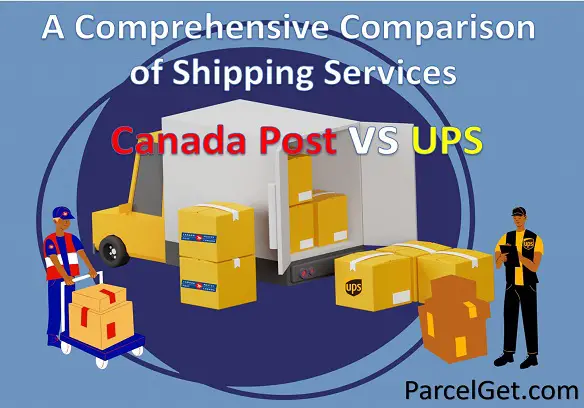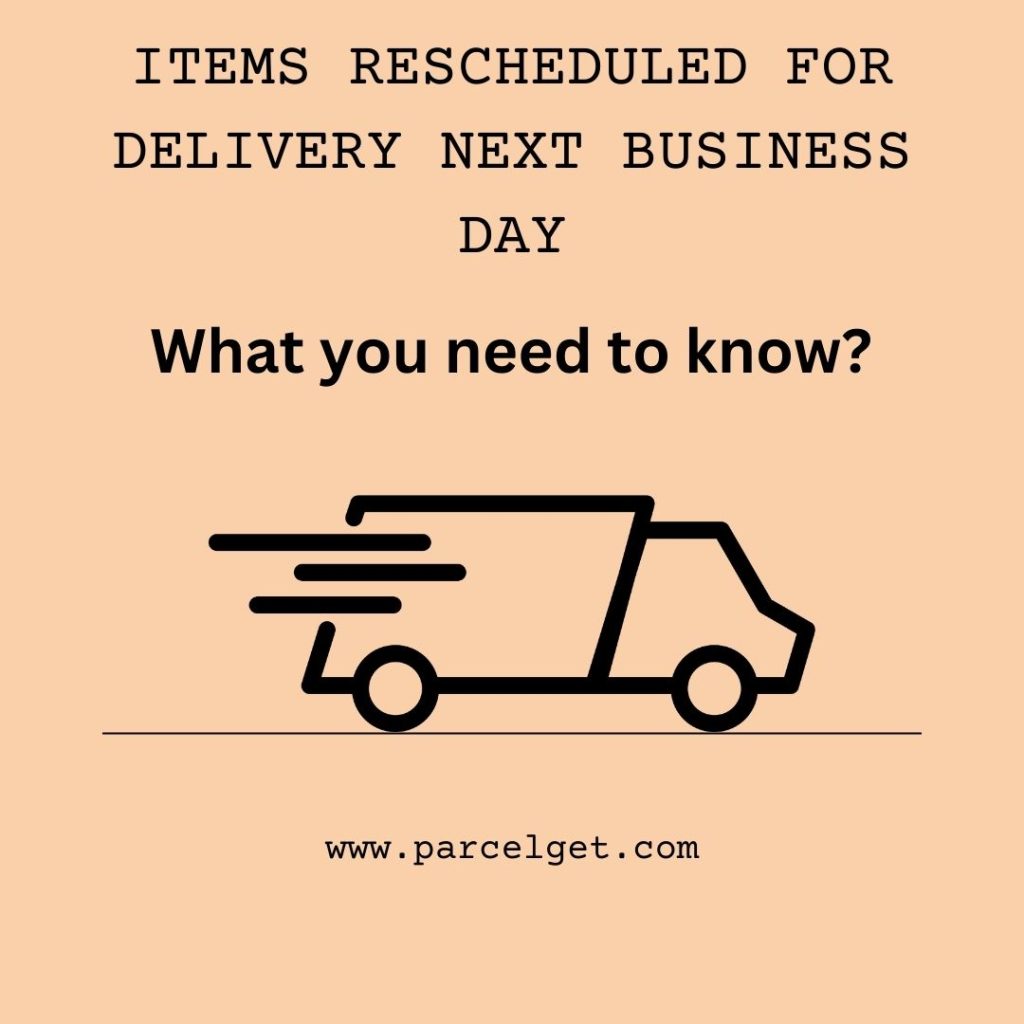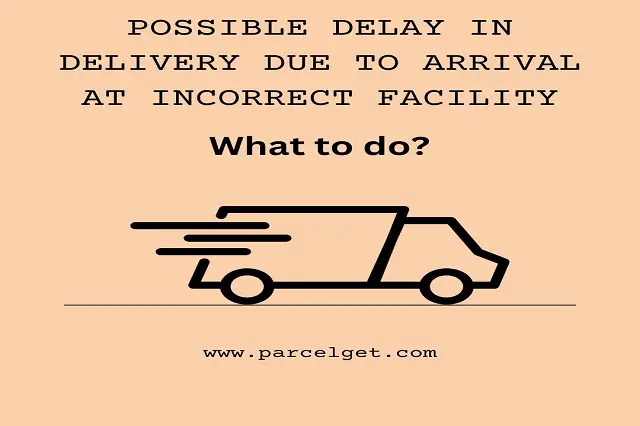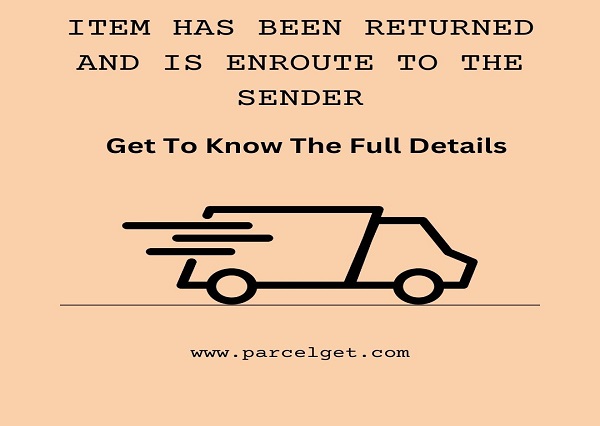Parcel troubles at the delivery depot and the sorting process are key aspects of the logistics industry. It can impact the timely and accurate delivery of packages. Understanding what to expect in these situations is crucial for both customers and delivery service providers.
This article explores the common challenges faced at the delivery depot, the impact of parcel troubles on the sorting process, and what individuals can anticipate in such circumstances. By shedding light on these topics, individuals can gain insights into the complexities of the delivery process.
It will help them to be prepared navigating any potential issues that may arise.

Your Parcel on its Way to the Delivery Depot
Your parcel has been sorted and is now in route to the delivery depot. It is an exciting news. This update signifies that your eagerly awaited package is one step closer to reaching your doorstep. The delivery team is diligently working to ensure a smooth and efficient journey for your parcel.
The sorting stage is a vital part of the delivery process, where your package is organized and prepared for its final leg of the journey. The dedicated professionals meticulously handle each item, and ensure it is correctly labeled for dispatch.
From there, it is swiftly transported to the delivery depot, where it will be prepared for the final delivery to your address. This milestone update brings a sense of anticipation and reassurance. Your parcel is progressing smoothly towards its destination.
Soon, it will be in the capable hands of the delivery team. They will ensure its safe and timely arrival. Keep an eye out for further updates as your parcel continues its exciting journey to your eagerly awaiting destination.
Challenges Faced by Delivery Depot in Parcel Sorting
Delivery depots play a critical role in the efficient sorting and distribution of parcels. However, they face several challenges that can impact their operations and the timely delivery of packages. Some common challenges faced by delivery depots in parcel sorting include:
· High Volume
Delivery depots often handle a high volume of packages, especially during peak seasons or promotional periods. Managing and sorting such a large quantity of parcels within limited time frames can be demanding. It may lead to delays if not properly managed.
· Limited Space
Delivery depots require sufficient space to store, sort, and organize packages. However, space constraints can pose challenges, especially when dealing with a surge in parcel volumes. Insufficient space may result in congestion, difficulties in locating packages, and inefficient sorting processes.
· Complex Logistics
The logistics involved in sorting parcels accurately ensure they reach their intended destinations. With packages coming from various origins and destined for different locations, coordinating the sorting process and maintaining accuracy can be challenging. It is more challenging when dealing with large-scale operations.
· Mislabeled or Damaged Packages
Mislabeled or damaged packages can create additional hurdles in the sorting process. If packages are improperly labeled or have unreadable barcodes, it becomes difficult to identify their destinations accurately. Similarly, damaged packages require extra care and attention to avoid any further harm or delays.
Are Parcel Troubles at Delivery Depot Regular?
Parcel troubles at delivery depots are not regular occurrences but can happen from time to time due to various factors. Delivery depots handle a significant volume of packages on a daily basis, and occasional issues can arise.
These troubles can range from misrouted or misplaced packages to delays in sorting or processing. However, it is important to note that delivery depots strive to minimize such troubles through efficient processes, quality control measures, and continuous staff training.
The occurrence of parcel troubles at delivery depots can be influenced by factors such as peak seasons, unexpected increases in package volumes, extreme weather conditions, or disruptions in the transportation network. These external factors can impact the smooth flow of operations and result in delays or errors in the sorting and delivery process.
While delivery depots make every effort to ensure accurate and timely delivery, challenges can arise due to the dynamic nature of the logistics industry. It is important to understand that parcel troubles are not the norm, and most packages are successfully processed and delivered without any issues.
However, in cases where parcel troubles do occur, it is essential for delivery depots to take swift action to rectify the situation. Communicate with customers, and resolve any concerns promptly. By addressing these challenges, delivery depots can maintain a high level of service and customer satisfaction.
Do You Need to Pay Extra Charges for Delivery Depot Troubles?
Generally, customers do not need to pay extra charges for delivery depot troubles. The responsibility for ensuring smooth and timely delivery lies with the delivery service provider. However, it is important to note that certain circumstances, may incur additional fees.
You can take into example like incorrect addresses, redirection or expedited delivery. These charges are typically communicated to customers upfront and are separate from any issues or troubles that may occur at the delivery depot.
It is advisable to review the terms and conditions of the delivery service provider to understand their policies regarding extra charges in case of delivery depot troubles.
What is the Sorting Process After Delivery Depot Troubles?
After encountering troubles at the delivery depot, the sorting process undergoes a reassessment to rectify any issues and ensure the smooth flow of parcel delivery. The specific steps involved in the sorting process after delivery depot troubles may vary depending on the nature of the problem and the policies of the delivery service provider.
However, the general aim is to resolve the issues and get the parcels back on track for timely delivery. The sorting process begins by identifying the packages that were affected by the depot troubles. These parcels are then carefully reviewed to determine the root cause of the problem.
Based on the assessment, appropriate corrective measures are taken to address each package individually. This may involve relabeling misrouted packages, repairing damaged packaging, or initiating a re-sorting process to ensure that the parcels are correctly assigned to their respective delivery routes.
Communication with customers may also be necessary to provide updates on the status of the affected parcels and any revised delivery estimates. Throughout the sorting process, priority is given to resolving the issues efficiently while maintaining accuracy and adherence to delivery schedules.
The goal is to minimize any further delays and ensure that the parcels are promptly redirected to the correct routes for successful delivery. By implementing a diligent sorting process after delivery depot troubles, delivery service providers can rectify any issues and regain control over the delivery flow. This helps to ensure that the parcels reach their intended destinations in a timely manner.
Common Courier Delivery Process Flow
The common courier delivery process follows a systematic flow to ensure smooth and efficient delivery of parcels. Here is an overview of the key steps involved:
- Pickup: Couriers collect packages from various origins and consolidate them for transportation.
- Sorting: Parcels are taken to a central sorting facility where they are organized based on their destinations.
- Labeling: Each package is assigned a unique barcode or tracking number for easy identification and tracking.
- Loading: Parcels are loaded onto delivery vehicles, such as vans or trucks, according to their designated routes.
- Dispatch: Delivery personnel receive their assigned routes and begin the delivery process.
- Transit: Couriers transport packages to the specified delivery locations, following the most efficient routes.
- Delivery: Packages are handed over to the recipients or left at designated drop-off points, ensuring proper verification.
- Tracking: Customers can track the progress of their packages through online tracking systems or customer service helpline.
- Proof of Delivery: Couriers collect signatures or use digital methods to confirm successful delivery.
- Returns and Exceptions: Any undelivered or refused packages are processed for return or further handling.
Undelivered or Delayed Parcels and Dissatisfied Customers
Undelivered or delayed parcels can lead to dissatisfied customers and impact the reputation of courier services. There can be various reasons for these issues, including incorrect addresses, failed delivery attempts, package damage, or unforeseen circumstances.
When parcels are undelivered or delayed, it is essential for courier services to proactively communicate with customers. They should provide timely updates and resolving any issues promptly. Alternative delivery options, and should offer compensation when appropriate.
Importance of Strategically Sorting and Designating Goods for Delivery
Strategically sorting and designating goods for delivery is of utmost importance in the courier industry. It allows for the efficient and effective movement of packages, ensuring timely and accurate deliveries. Here are some key reasons highlighting the importance of this process:
Enhanced Efficiency
Strategic sorting enables couriers to optimize their delivery operations by grouping parcels based on their destinations and specific routes. This ensures that delivery personnel can plan their routes more effectively, minimizing unnecessary backtracking or inefficient travel. As a result, time and resources are optimized, leading to improved efficiency in the delivery process.
Reduced Transit Times
By strategically sorting goods, couriers can minimize transit times. Packages are organized in a way that ensures the most direct and efficient routes are taken, avoiding unnecessary delays or detours. This helps to expedite the delivery process, meeting customer expectations for faster turnaround times.
Accurate Deliveries
Sorting goods strategically ensures that each package is designated to the correct delivery route. This minimizes the risk of misdelivery or package mix-ups, resulting in accurate and error-free deliveries. By maintaining accuracy throughout the sorting process, couriers can enhance customer satisfaction and build trust in their services.
Tailored Services
Strategic sorting allows couriers to designate goods based on specific requirements. For instance, fragile items can be handled with extra care, time-sensitive packages can be prioritized, and special instructions or delivery preferences can be considered. This personalized approach enables couriers to provide tailored services that meet the unique needs of their customers.
Improved Customer Experience
Strategically sorting and designating goods for delivery ultimately leads to an enhanced customer experience. Timely and accurate deliveries, along with personalized service options, contribute to higher customer satisfaction and loyalty. A positive customer experience can also result in favorable reviews, recommendations, and repeat business.
Use of Futuristic Technologies in Sorting Process
The use of futuristic technologies has revolutionized the sorting process in the courier industry. High-speed conveyors, robotic arms, and barcode scanners, have significantly improved the speed and accuracy of sorting operations.
These technologies enable seamless tracking and tracing of parcels, reducing errors and enhancing efficiency. Additionally, machine learning algorithms and artificial intelligence (AI) are being employed to optimize sorting algorithms.
The integration of AI-powered image recognition systems further enhances the accuracy of sorting by automatically identifying package dimensions, shapes, and labels. These technological advancements not only increase the speed of the sorting process but also improve the overall operational effectiveness and customer satisfaction.
Final Verdict
Parcel troubles at the delivery depot can introduce delays, misroutings, or other challenges in the sorting process. It is important to be aware of the potential impact and to have a clear understanding of the steps taken by delivery service providers to address these issues.
By staying informed and proactive, individuals can work together with the delivery service. It will ensure efficient resolution and minimize any disruptions in the delivery of their packages. Thank you for reading this far. Keep coming back for more updates shortly.




